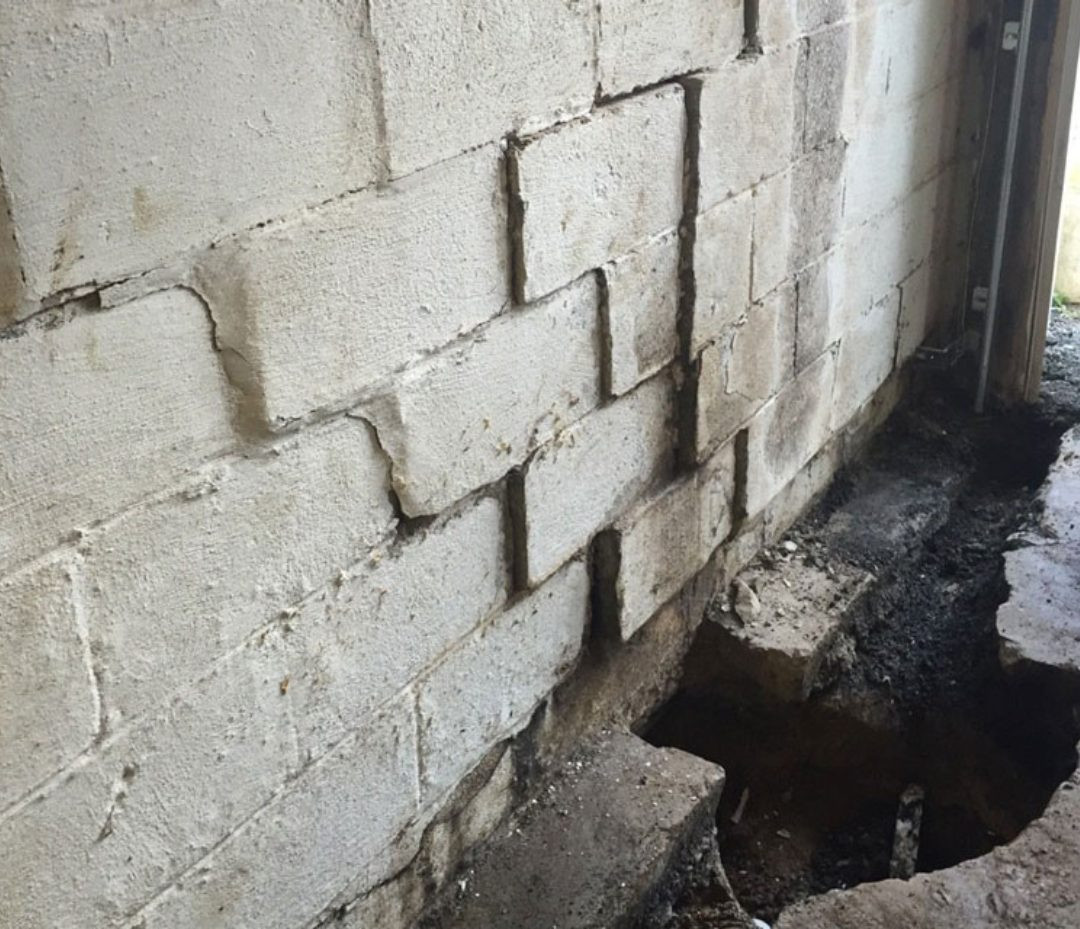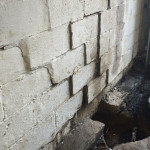Structural integrity is the backbone of any building, and when it comes to basements, ensuring that the foundation is sound is crucial to preventing water intrusion and maintaining the overall stability of the home. Basement waterproofing is not just about managing water; it also involves addressing the structural issues that allow water to penetrate the foundation in the first place. This article focuses on the importance of foundation crack repair and stabilization, two essential aspects of basement structural waterproofing. By understanding and applying these techniques, professionals can ensure that basements remain dry, secure, and free from structural damage.
Identifying Structural Problems
The first step in any structural waterproofing project is identifying the underlying problems that need to be addressed. Cracks in the foundation are a common issue that can compromise both the waterproofing system and the structural integrity of the home.
Techniques for Detecting and Assessing Foundation Cracks:
-
Visual Inspection: The most straightforward method involves a thorough visual inspection of the foundation walls, both inside and out. Professionals look for signs of cracks, which can vary in size from hairline fractures to large, gaping splits.
- Crack Monitoring: For ongoing assessment, professionals may use crack monitors or gauges. These devices are placed over a crack and can measure any changes in width over time, indicating whether the crack is stable or expanding.
- Soil Movement Analysis: Foundation cracks often result from soil movement. By analyzing soil conditions around the home, professionals can determine whether the soil is shifting due to factors such as poor drainage, expansive clay, or improper backfilling, which may contribute to the cracking.
- Structural Assessment: In addition to checking for visible cracks, a comprehensive structural assessment may include evaluating the overall condition of the foundation, and checking for signs of settlement, bowing walls, or uneven floors.
Crack Repair Methods
Once foundation cracks have been identified, the next step is to repair them. The method chosen depends on the type and severity of the crack, as well as the material of the foundation.
Injection Techniques: Injection methods are commonly used to repair cracks in concrete foundations. These techniques involve injecting a liquid material into the crack, which then hardens and seals it, preventing water from entering.
- Epoxy Injection: Epoxy is a strong, durable material that bonds with the concrete, effectively sealing the crack and restoring the structural integrity of the foundation. Epoxy injection is typically used for cracks that are not actively moving, as it forms a rigid seal.
- Polyurethane Injection: Polyurethane is a flexible material that expands when injected, filling the crack and creating a waterproof barrier. This method is particularly effective for repairing cracks that are subject to slight movement, as the flexibility of polyurethane allows it to accommodate minor shifts in the foundation.
Step-by-Step Guide to Crack Injection:
- Surface Preparation: The area around the crack is cleaned, and any loose material is removed to ensure proper adhesion of the injection material.
- Injection Ports Installation: Small ports are installed along the length of the crack. These ports allow the injection material to be delivered deep into the crack.
- Sealing the Crack: A surface sealant is applied over the crack to contain the injection material within the crack and prevent it from leaking out.
- Injecting the Material: The injection material, either epoxy or polyurethane, is introduced into the crack through the ports. It is injected at high pressure to ensure it penetrates the full depth of the crack.
- Curing: The material is allowed to cure, forming a solid or flexible seal depending on the material used. The injection ports and surface sealant are then removed.
Foundation Stabilization Techniques
In cases where the foundation has experienced significant movement or damage, crack repair alone may not be sufficient. Foundation stabilization techniques are required to address underlying issues and prevent further movement.
Overview of Foundation Stabilization Methods:
- Piering: Piering involves installing steel or concrete piers deep into the ground beneath the foundation. These piers reach stable soil or bedrock, providing a firm base that supports the foundation and prevents further settlement. This method is especially useful in areas with unstable or expansive soils.
- Underpinning: Underpinning is a process where additional support is added to the foundation to strengthen it. This can involve extending the foundation deeper into the ground or adding new supports to areas that are failing.
- Wall Anchors: For foundations experiencing lateral movement, such as bowing walls, wall anchors can be installed. These anchors are driven into the ground outside the home and attached to the interior wall. Tightening the anchors gradually pulls the wall back into place and stabilizes it.
Detailed Description of the Installation Process:
- Site Assessment: The first step in any stabilization project is a thorough assessment of the foundation and surrounding soil conditions. This assessment helps determine the most appropriate stabilization method.
- Piering Installation: If piering is required, holes are dug around the foundation, and piers are driven into the ground until they reach stable soil or bedrock. The foundation is then lifted onto the piers, providing a new, stable base.
- Underpinning: Underpinning typically involves excavating beneath the existing foundation and pouring new concrete footings or adding additional supports. This process strengthens the foundation and distributes the load more evenly.
- Wall Anchor Installation: For wall anchors, holes are drilled in the foundation wall, and anchors are driven into the ground outside. The anchors are connected to the wall with steel rods, and the tension is adjusted to straighten and stabilize the wall.
Advanced Structural Waterproofing Techniques
Beyond basic crack repair and stabilization, there are advanced techniques that professionals can employ to enhance the structural waterproofing of a basement.
Carbon Fiber Reinforcement: Carbon fiber strips are a modern solution for reinforcing basement walls. These strips are applied to the interior of the foundation walls and bonded with epoxy. Once in place, they provide significant strength, preventing walls from bowing or cracking further. Carbon fiber is an excellent option because it is strong, lightweight, and does not require major excavation or disruption to the home.
Sealing and Reinforcing Construction Joints: Construction joints, where different sections of the foundation meet, are common points of water entry. To prevent leaks, these joints can be sealed with flexible sealants or reinforced with additional concrete or metal strips. Ensuring that these joints are properly sealed is crucial for maintaining the overall integrity of the waterproofing system.
Waterproofing Coatings and Liners: In some cases, applying additional waterproof coatings or liners to the interior or exterior of the foundation can provide extra protection. These coatings are often used in conjunction with other waterproofing systems to create a comprehensive barrier against water intrusion.
Integrating Structural Repairs with Waterproofing Systems
Structural repairs and waterproofing are most effective when integrated into a comprehensive system that addresses both the causes and effects of water intrusion.
Integration Strategies:
- Combining Crack Repair with Drainage Systems: After repairing cracks, it’s essential to ensure that water is properly managed around the foundation. Installing or upgrading exterior drainage systems, such as French drains, can prevent water from pooling near the foundation and putting pressure on repaired cracks.
- Linking Stabilization with Interior Waterproofing: When stabilizing a foundation, it’s important to consider how water is managed inside the basement. Integrating wall anchors or piers with an interior drainage system can help prevent water from seeping through walls that have been stabilized.
- Holistic Approach to Waterproofing: A comprehensive waterproofing plan should include both structural repairs and water management systems. This holistic approach ensures long-term protection for the basement and the overall structure of the home.
Maintenance and Monitoring
Even after repairs and stabilization, ongoing maintenance and monitoring are essential to ensure the long-term effectiveness of the waterproofing system.
Regular Inspections:
- Foundation Inspections: Regularly inspecting the foundation for new cracks or signs of movement is crucial. Early detection allows for prompt repair, preventing small issues from becoming major problems.
- Monitoring Systems: Installing monitoring systems, such as crack gauges or soil moisture sensors, can help detect changes in the foundation or surrounding soil conditions. These systems provide valuable data that can inform maintenance decisions.
- Routine Maintenance of Stabilization Systems: For homes with installed stabilization systems like piers or wall anchors, periodic adjustments may be necessary to maintain their effectiveness. Professionals should inspect and adjust these systems as needed to ensure they continue to provide adequate support.
Common Issues and Repairs:
- Recurring Cracks: If cracks reappear after repair, it may indicate ongoing foundation movement. In such cases, further stabilization or even more extensive repairs may be required.
- Water Intrusion: If water continues to enter the basement despite repairs, it’s important to reassess the waterproofing system. Additional measures, such as improving drainage or adding more waterproof coatings, may be necessary.
- Soil Erosion: Poor drainage or landscaping can lead to soil erosion around the foundation, undermining stabilization efforts. Maintaining proper grading and installing erosion control measures can help protect the foundation from future damage.
Basement structural waterproofing, particularly through foundation crack repair and stabilization, is essential for maintaining the integrity of both the foundation and the waterproofing system. By addressing structural issues early and employing advanced techniques, professionals can ensure that basements remain dry, stable, and free from water-related damage. As construction practices and materials continue to evolve, these methods will become even more effective, providing long-term protection for homeowners and their properties.
Contact the Professionals at Everdry Waterproofing Of Columbus Today! (614) 850-5600





